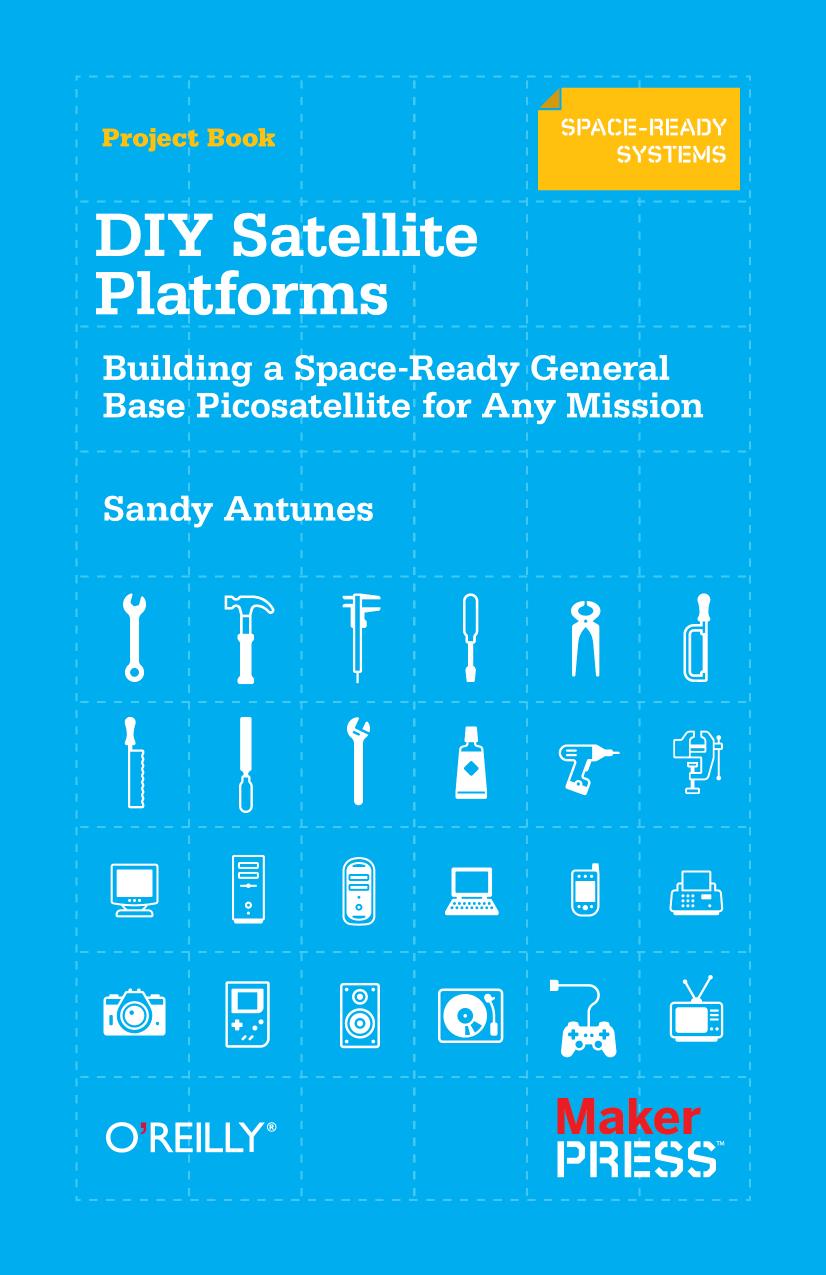DIY Satellite Platforms by Sandy Antunes

Author:Sandy Antunes [Sandy Antunes]
Language: eng
Format: epub, mobi, pdf
Tags: SCIENCE / Space Science
ISBN: 9781449310592
Publisher: Make
Published: 2012-01-29T16:00:00+00:00
Payload Bays
It is important that you design your picosatellite to include room for the sensor or engineering payload. While this is obvious, it is so easy to get caught up in building efficient power systems and programming the CPU, only to realize you don’t have enough space for your mission.
Imaging sensors—sensors that require a line of sight outside the satellite shell—require the most difficult placement. In-situ sensors, which measure the satellite’s ambient environment, must be placed where noise from the onboard electronics do not contaminate the signal. Therefore, isolation and shielding are considerations, which will affect both your spatial and weight budgets.
Shielding is a complex topic. Here, we are concerned about shielding your components to prevent cross-talk—to prevent any of your components from causing interference with the others. This is something you can and will test for when you integrate your pieces into your final build.
There is also shielding from the external environment expected in space. LEO is in the ionosphere and there are radiation and electric/magnetic field concerns. Unfortunately, shielding against those are not a simple matter. First, shielding requires adding material, which adds weight.
Second, while high-energy particles will do more damage than low-energy particles (typically), electronics are susceptible to specific energies more than others. Finally, shielding will block low-energy particles but it will also slow down (or attenuate) higher-energy particles to a lower energy. It is possible, through incorrect design of shielding, to increase the radiation hazards experienced by your satellite.
For both the weight and complexity issues, then, I recommend that you focus on shielding in terms of ensuring your satellite components will not interfere with one another. In particularly, you do not want noise from your power bus or CPU to interfere with your sensors, and you want your radio antenna to be on the side opposite any electromagnetic sensors to minimize induced radio interference. Past that, skip the weight hit and fly it naked.
Download
DIY Satellite Platforms by Sandy Antunes.mobi
DIY Satellite Platforms by Sandy Antunes.pdf
This site does not store any files on its server. We only index and link to content provided by other sites. Please contact the content providers to delete copyright contents if any and email us, we'll remove relevant links or contents immediately.
Whiskies Galore by Ian Buxton(41882)
Introduction to Aircraft Design (Cambridge Aerospace Series) by John P. Fielding(33064)
Rewire Your Anxious Brain by Catherine M. Pittman(18554)
Craft Beer for the Homebrewer by Michael Agnew(18145)
Cat's cradle by Kurt Vonnegut(15189)
Sapiens: A Brief History of Humankind by Yuval Noah Harari(14254)
Leonardo da Vinci by Walter Isaacson(13188)
The Tidewater Tales by John Barth(12609)
Thinking, Fast and Slow by Kahneman Daniel(12080)
Underground: A Human History of the Worlds Beneath Our Feet by Will Hunt(12026)
The Radium Girls by Kate Moore(11926)
The Art of Thinking Clearly by Rolf Dobelli(10229)
A Journey Through Charms and Defence Against the Dark Arts (Harry Potter: A Journey Throughâ¦) by Pottermore Publishing(9233)
Mindhunter: Inside the FBI's Elite Serial Crime Unit by John E. Douglas & Mark Olshaker(9206)
Tools of Titans by Timothy Ferriss(8222)
Wonder by R. J. Palacio(8012)
Turbulence by E. J. Noyes(7940)
Change Your Questions, Change Your Life by Marilee Adams(7637)
Nudge - Improving Decisions about Health, Wealth, and Happiness by Thaler Sunstein(7622)
